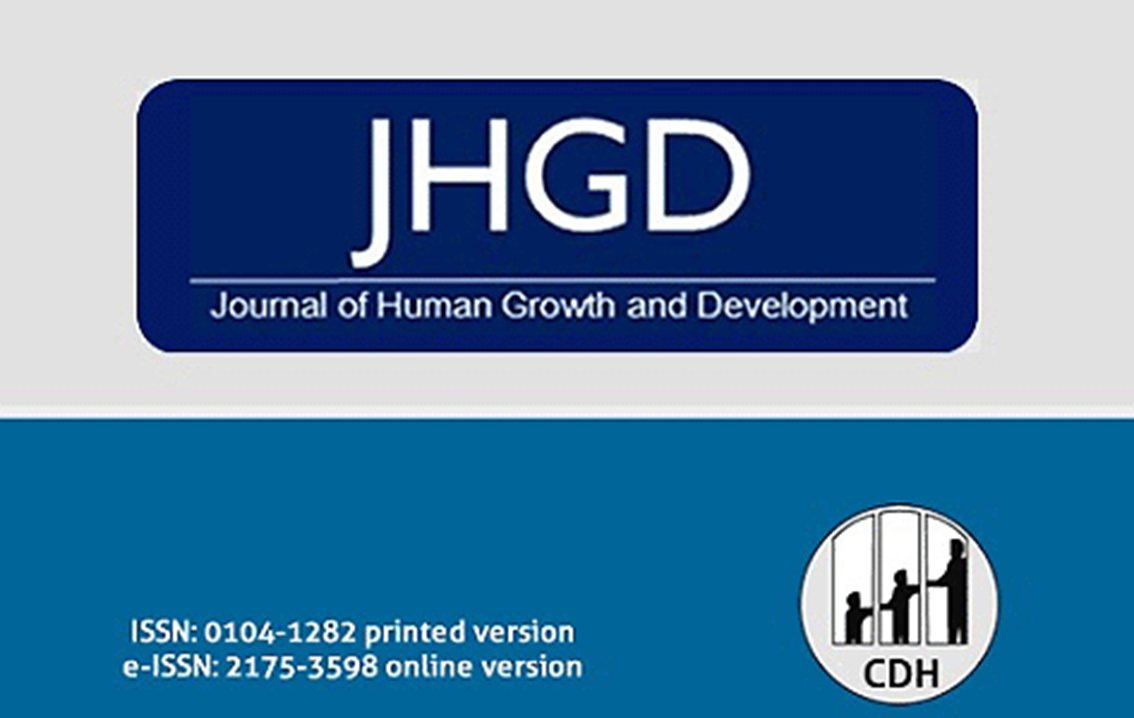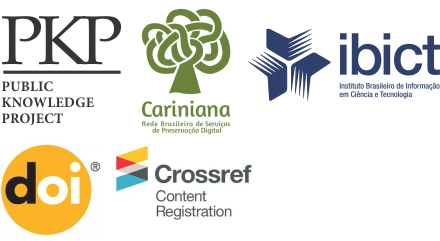Factors associated with dengue cases in brazilian industrial area: an ecological study
DOI:
https://doi.org/10.7322/jhgd.v30.11113Keywords:
dengue, dengue virus, socioeconomic factors, social wasteAbstract
Introduction: Dengue is an acute systemic viral infectious disease, established worldwide in epidemic and endemic transmission cycles. High levels of precipitation, adequate temperatures, proximity between urban and peri-urban centers, human movement between population centers and urban solid waste (USW) production may facilitate dengue transmission and spread.
Objective: To identify the relationship between diagnosed dengue cases and socioeconomic factors, USW mass generation and rainfall index.
Methods: Ecological study, with secondary data collection from 2010 to 2016 for each municipality of the Greater ABC Region in São Paulo, Brazil. Total population, gross domestic product (GDP) per capita, USW, number of dengue cases and rainfall index were investigated. Data were collected on the websites of the Brazilian Institute of Geography and Statistics (IBGE), the municipalities of the Greater ABC Region, the Greater ABC Intermunicipal Consortium, the Greater ABC Economic Development Agency, the National Sanitation Information System, Surveillance Epidemiological Survey of the State of São Paulo and the Department of Water and Electric Energy of the State of São Paulo. Relationships between variables were tested by Spearman correlation.
Results: Data analysis of all municipalities showed a positive correlation between dengue cases with total population (r=0.675, p<0.01), gross domestic product per capita (r=0.539, p<0.01) and MSW by inhabitant per year (r=0.492, p<0.01). Positive correlations were also observed between total population and gross domestic product per capita (r=0.583, p<0.01), MSW / Day (r=0.302, p<0.05) and MSW/year (r=0.961, p<0.01); gross domestic product per capita and MSW/day (r=0.849, p<0.01), MSW/year (r=0.410, p<0.05) and rainfall index (RI) (r=0.416, p<0.05); MSW / day and MSW / year (r=0.389, p<0.01) and RI (r=0.388, p<0.05).
Conclusion: The larger the total population, purchasing power or socioeconomic status (GDP per capita) and the generation of MSW, the greater the number of dengue cases. Proper packaging of MSW seems to be a way to help in dengue cases control.
Downloads
References
Bhatt S, Gething PW, Brady OJ, Messina JP, Farlow AW, Moyes CL, et al. The global distribution and burden of dengue. Nature. 2013;496(7446):504-7. DOI: http://doi.org/10.1038/nature12060
Stanaway JD, Shepard DS, Undurraga EA, Halasa YA, Coffeng LE, Brady OJ, et al. The global burden of dengue: an analysis from the Global Burden of Disease Study 2013. Lancet Infect Dis. 2016;16(6):712-23. DOI: https://doi.org/10.1016/S1473-3099(16)00026-8
Brasil. Ministério da Saúde. Fundação Nacional de Saúde (FUNASA). Programa Nacional de Controle da Dengue (PNCD). Instituído em 24 de julho de 2002. Brasília: Ministério da Saúde, 2002.
Donalísio MR, Glasser CM. Vigilância entomológica e controle de vetores da dengue. Rev Bras Epidemiol. 2002;5(3):259-79. DOI: https://doi.org/10.1590/S1415-790X2002000300005
Glasser CM, Gomes AC. Infestação do Estado de São Paulo por Aedes aegypti e Aedes albopictus. Rev Saúde Pública. 2000;34(6):570-7. DOI: http://dx.doi.org/10.1590/S0034-89102000000600002
Carneiro MAF, Alves BCA, Gehrke FS, Domingues JN, Sá N, Paixão S, et al. Fatores climáticos podem influenciar nos casos de notificação de dengue. Rev Assoc Med Bras. 2017;63(11):957-61. DOI: https://doi.org/10.1590/1806-9282.63.11.957
Abeyewickreme W, Wickremasinghe AR, Karunatilake K, Johannes Sommerfeld J, Kroeger A. Community mobilization and household level waste management for dengue vector control in Gampaha district of Sri Lanka; an intervention study. Pathog Glob Health. 2012;106(8):479 87. DOI: https://doi.org/10.1179/2047773212Y.0000000060
Brasil. Ministério do Meio Ambiente. Lei nº. 12.305, de 02 de agosto de 2010. Institui a Política Nacional de Resíduos Sólidos, e dá outras providências. Diário Oficial da União. Brasília: 2010.
Instituto Brasileiro de Geografia e Estatística (IBGE). Censo 2010. [internet] [cited 2020 Jun 09] Available from: https://censo2010.ibge.gov.br/
Sistema Nacional de Informações sobre Saneamento (SNIS). Diagnóstico do manejo de Resíduos Sólidos Urbanos - 2018 [internet] 2018. [cited 2020 Jun 09] Available from: http://www.snis.gov.br/diagnostico-anual-residuos-solidos/diagnostico-do-manejo-de-residuos-solidos-urbanos-2018
Prefeitura de Santo André [internet] 2018 [cited 2020 Jun 09] Available from: https://www2.santoandre.sp.gov.br/
Prefeitura Municipal de São Caetano do Sul [internet] 2018 [cited 2020 Jun 09] Available from: https://www.saocaetanodosul.sp.gov.br/
Prefeitura de São Bernardo [internet] 2018 [cited 2020 Jun 09] Available from: https://www.saobernardo.sp.gov.br/
Prefeitura de Diadema [internet] 2018 [cited 2020 Jun 09] Available from: http://www.diadema.sp.gov.br/
Prefeitura do Município de Mauá [internet] 2018 [cited 2020 Jun 09] Available from: http://www.maua.sp.gov.br/
Prefeitura Municipal de Ribeirão Pires [internet] 2018 [cited 2020 Jun 09] Available from: https://www.ribeiraopires.sp.gov.br/
Prefeitura de Rio Grande da Serra [internet] 2018 [cited 2020 Jun 09] Available from: http://www.riograndedaserra.sp.gov.br/
Consórcio Intermunicipal Grande ABC (GIGABC) [internet] 2017. [cited 2020 Jun 09] Available from: http://consorcioabc.sp.gov.br
Agência Desenvolvimento Econômico Grande ABC (ADEG) [internet] 2012. [cited 2020 Jun 09] Available from: http://www.agenciagabc.com.br/grandeabc0709br
Governo do Estado de São Paulo. Secretaria de Estado da Saúde. Centro de Vigilância Epidemiológica (CVE) [internet 2018. [cited 2020 Jun 09] Available from: http://www.saude.sp.gov.br/cve-centro-devigilancia-epidemiologica-prof.-alexandre-vranjac/
Departamento de Águas e Energia Elétrica do Estado de São Paulo (DAEE). Rede Hidrológica Básica do Estado de São Paulo [internet] 2018. [cited 2020 Jun 09] Available from: http://www.daee.sp.gov.br/
Yue Y, Sun J, Liu X, Ren D, Liu Q, Xiao X et al. Spatial analysis of dengue fever and exploration of its environmental and socio-economic risk factors using ordinary least squares: A case study in five districts of Guangzhou City, China, 2014. Int J Infect Dis 2018;75:39-48. DOI: https://doi.org/10.1016/j.ijid.2018.07.023
Udayanga L, Gunathilaka N, Iqbal MCM, Lakmal K, Amarasinghe US, Abeyewickreme W. Comprehensive evaluation of demographic, socio-economic and other associated risk factors affecting the occurrence of dengue incidence among Colombo and Kandy Districts of Sri Lanka: a cross-sectional study. Parasit Vectores. 2018;11(1):478. DOI: https://doi.org/10.1186/s13071-018-3060-9
Udayanga L, Gunathilaka N, Iqbal MCM, Pahalagedara K, Amarasinghe US, Abeyewickreme W. Socioeconomic, Knowledge Attitude Practices (KAP), household related and demographic based appearance of non-dengue infected individuals in high dengue risk areas of Kandy District, Sri Lanka. BMC Infect Dis. 2018;18:88. DOI: https://doi.org/10.1186/s12879-018-2995-y
Guzman MG, Halstead SB, Artsob H, Buchy P, Farrar J, Gubler DJ, et al. Dengue: a continuing global threat. Nat Rev Microbiol. 2010;8 (12 Suppl):S7-16. DOI: https://doi.org/10.1038/nrmicro2460
Thammapalo S, Chongsuvivatwong V, Geater A, Dueravee M. Environmental factors and incidence of dengue and hemorrhagic fever in an urban area, southern Thailand. Epidemiol Infect. 2008;136(1):135-43. DOI: https://doi.org/10.1017/S0950268807008126
Romeo-Aznar V, Paul RE, Telle O, Pascual M. Mosquito-borne transmission in urban landscapes: the missing link between vector abundance and human density. Proc Biol Sci. 2018;285(1884):20180826. DOI: https://doi.org/10.1098/rspb.2018.0826
ten Bosch QA, Clapham HE, Lambrechts L, Duong V, Buchy P, Althouse BM, et al. Contributions from the silent majority dominate dengue virus transmission. PLoS Pathog. 2018;14(5):e1006965. DOI: https://doi.org/10.1371/journal.ppat.1006965
Santos CAG, Guerra-Gomes IC, Gois BM, Peixoto RF, Keesen TSL, Silva RM. Correlation of dengue incidence and rainfall occurrence using wavelet transform for João Pessoa city. Sci Total Environ. 2019;647:794-805. DOI: https://doi.org/10.1016/j.scitotenv.2018.08.019
Focks DA, Barrera R. Dengue Transmission Dynamics: Assessment and Implications for Control. Technical Report, Scientific Working Group, Report on Dengue. World Health Organization on Behalf of the Special Programme for Research and Training in Tropical Diseases. Geneva: 2007.
Patz JA, Martens W, Focks DA, Jetten TH. Dengue fever epidemic potential as projected by general circulation models of global climate change. Environ Health Perspect. 1998;106(3):147-53. DOI: https://doi.org/10.1289/ehp.98106147
Gama RA, Alves KC, Martins RF, Eiras AE, Resende MC. Effect of larvae density on adult size of Aedes aegypti reared under laboratory condictions. Rev Soc Bras Med Trop. 2005;38(1):64-6. DOI: https://doi.org/10.1590/s0037-86822005000100014
Qu Y, Shi X, Wang Y, Li R, Lu L, Liu Q. Effects of socio-economic and environmental factors on the spatial heterogeneity of dengue fever investigated at a fine scale. Geopast Health. 2018;13(2). DOI: https://doi.org/10.4081/gh.2018.682
Bangert M, Latheef AT, Pant SD, Ahmed IN, Saleem S, Rafeeq FN, et al. Economic analysis of dengue prevention and case management in the Maldives. PLoS Negl Trop Dis. 2018;12(9):e0006796. DOI: https://doi.org/10.1371/journal.pntd.0006796
Franca FPO, Leis FS, Boro I, Importa RF, Azevedo SAS, Carvalho TD, et al. Correlação entre rendimento e geração de recursos econômicos na Região Metropolitana de São Paulo. Saúde Meio Ambient. 2013;2(1): 84-92. DOI: https://doi.org/10.24302/sma.v2i1.428
Zara ALSA, Santos SM, Fernandes-Oliveira ES, Carvalho RG, Coelho GE. Estratégias de controle do Aedes aegypti: uma revisão. Epidemiol Serv Saúde. 2016;25(2):391-404. DOI: https://doi.org/10.5123/s1679-49742016000200017
Souza-Santos R. Fatores associados à ocorrência de formas imaturas de Aedes aegypti na Ilha do Governador, Rio de Janeiro, Brasil. Rev Soc Bras Med Trop. 1999;32(4):373-82. DOI: https://doi.org/10.1590/S0037-86821999000400007
Lefèvre AMC, Ribeiro AF, Marques GRAM, Serpa LLN, Lefèvre F. Representações sobre dengue, seu vetor e ações de controle por moradores do Município de São Sebastião, Litoral Norte do Estado de São Paulo, Brasil. Cad Saúde Pública. 2007;23(7):1696-1706. DOI: https://doi.org/10.1590/S0102-311X2007000700022
Downloads
Published
Issue
Section
License
Copyright (c) 2020 Danilo Correa Cordeiro

This work is licensed under a Creative Commons Attribution 4.0 International License.







